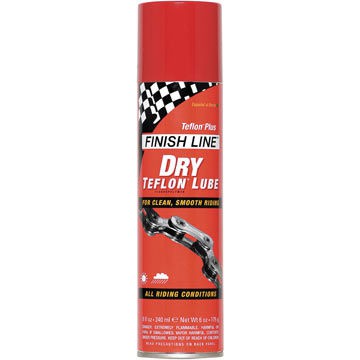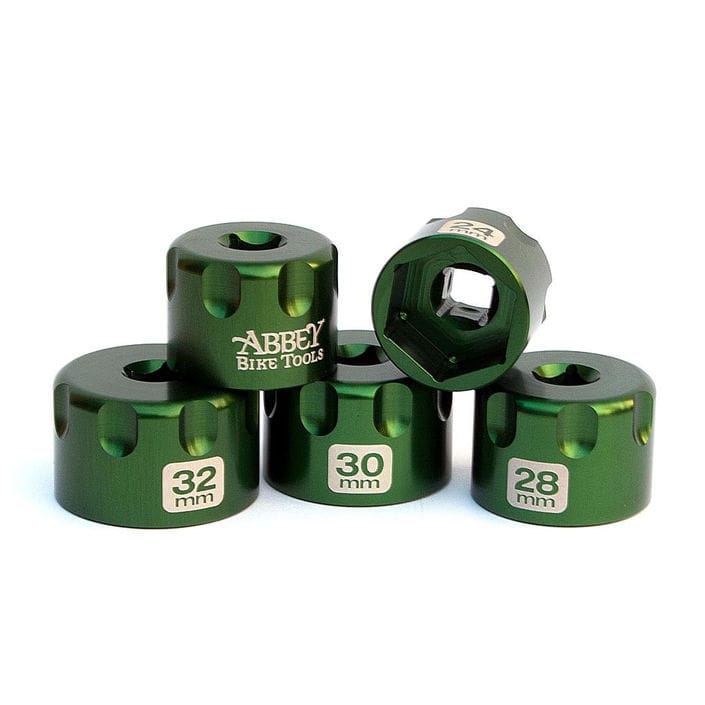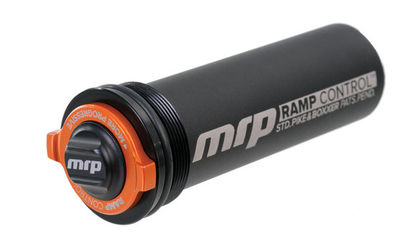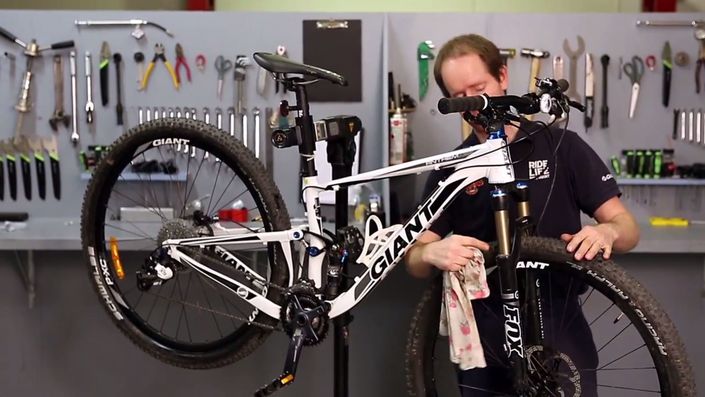
Spring is in the air, Valentine’s Day has come and gone, and now we can address our feelings for the other loves in our life — our bikes. The last ride of the year is often never expected to be the last ride, so it is easy to put your bike away dirty or wet with full intention of riding it again soon. The first ride of the season reminds you how important maintenance can be.
No matter what level of bike you have, your suspension is arguably the most important component to your mountain bike's performance. Properly working components make or break your experience when trail riding and suspension is the bulk of the experience. If a new rig isn’t in the budget for this year, I highly recommend servicing and tuning your current bike's shock absorbers.
I'll highlight a few things to consider regarding the importance of maintaining your bike's suspension before getting your season started.
Regular service and the maintenance schedule
The life of any mountain bike fork or shock is a busy one as they bump and ride their way down thousands of miles of trails a year. This is why brands like Fox Racing Shox have a firm service interval guide to keep their product performing. Sometimes this service interval information isn’t made as public as it should be; take for example Fox air shocks. Fox recommends that you service the air sleeve and inspect all bushings every 40 operational hours. This can be as simple as cleaning and lubing them with a teflon spray. I like to use the Finish Line Aerosol Spray in my bike shop.
A full rebuild service is recommended for every 200 hours of use. For all you Strava users out there, you can see how your rides start to stack the time clock pretty quick. The service manager at our store suggests that the average rider get a basic oil change on their suspension annually. If you ride more often then the weekend warrior, say three to four times a week, you may want to have the oil changed at the beginning and the middle of the season as well. Some of our athletes that ride every day will have six or seven full overhauls throughout the season to keep their bike running at the highest performance possible. Preventative maintenance is a requirement to keep your suspension alive; once there is damage to the teflon layer coating on the stanchion tubes or bushings from lack of oil lubrication, it is too late.
A “chirpy” sound coming from your front or rear suspension is often the result of dry seals. There is a certain amount of lube fluid in each fork and shock, and as the fluid wears it will get thicker and not be as slippery. At that point, the lube fluid will no longer be able to spread as easily and will result in a dry seal sliding across the shaft, creating the "chirpy" sound. Prolonged dry seals, just like skin, will crack, and once the seals have cracked they are in danger of leaking oil. This can be troublesome because the oil can dribble down the fork leg and contaminate your brake pads, resulting in an immediate loss of braking performance, a huge safety risk. Therefore, it is a great idea to keep your suspension clean and visually inspect the seals before every ride. A few drops of a teflon chain lube can be a nice way to externally lube your seals, keep them from cracking, and make sure all the dust or mud slips off the surface of the sliders. If your seals are leaking oil, your fork is telling you it’s sick and needs a trip to the bike doctor.
DIY or bring it in? Consider tools, recalls, & upgrades
The offseason is the best time to bring your equipment in to your local bike shop for service. For one, it's not as busy, so the staff will have a little more freedom with time to go the extra mile. Also, in cases where a fork or shock is still covered by its warranty, it may have to be sent back to the brands service center, leading to some down time without the bike, a pill that is a lot easier to swallow in the winter.
Servicing suspension has become a lot easier than it used to be with the help of online tutorials and parts lists provided by manufacturers. If you're willing to invest in the tools and the time, you can accomplish this in your own home. Amassing the right tools for the job can get very expensive, something a bike shop is willing to do because it will use them for many a service and to work efficiently — the right tools for the job. For example, Abbey Tools makes purpose-built top cap sockets to allow for easy, damage-free extraction of fork shock top caps. Use of tool substitutes / hacks can do damage to your components.
If your fork or shock is still covered under its warranty period, bring it into your local bike shop for servicing. A warranty may be voided by undocumented service from an unauthorized service center.
Replacing seals and oil can be a straightforward job and this is something many home mechanics will tackle on their own. Use of factory brand replacement parts is recommended, though there are some non-factory options that will work and are accepted by the manufacturer.
 image: bikehub.co.za
image: bikehub.co.zaHere is an example of a seal kit installed on a Fox 40. This is not a seal recommended to be used by Fox and it has a little too much friction. The added friction with a little bit of dust caught in the seal led to very quick wear of the stanchion tubes.
For most suspensions, you need to use the recommended oil while servicing. In the case of Fox, the previously used 10wt green oil needs to be replaced with a new 20wt gold oil.
In-depth rebuilds often mean working with demanding systems and small springs and bearings that can go missing in a hurry, so you want to know what you’re getting into before you disassemble your suspension. (Many mechanics spend a good portion of the day on their hands and knees with a flashlight searching under the workbench for valuable tiny components.) For example, Fox rear shocks have a chamber that runs a 500psi charge of nitrogen; it’s highly recommended to bring this to an authorized service center to disassemble and service. Keep in mind, too, replacement parts, which might be hard to get for current systems, are more expensive and harder to find as the they get older.
Stopping by your local bike shop every now and then can be a treat for the eyes and a good way to get valuable information.
Reputable bike shops also stay aware of warranty recall announcements from manufacturers. For example, Fox issued a recall last fall on the air sleeve of the new Fox Float X2 rear shocks. Fox's public announcement was also shared on social media, but customers at my shop weren't aware of it until my staff brought it to their attention.
When you bring your bike in for service, the shop may suggest upgrades to increase performance of your suspension piece. Recently, Vorsprung (Whistler, Canada) introduced a couple of serious game changers. The Vorsprung Luftkappe is an air piston upgrade that we recently installed on a Rockshox Pike to resolve the customer's issue with the Pike riding a little low in the travel and being a little harsh over the fast bumps. Upgrades like this, or something like an MRP Ramp Control Cartridge, completely change a fork's factory feel and give you the ability to retune the air spring to suit your weight and riding style.
New gadgets can make tuning and maintenance easier as well. Take for example the new Quarq ShockWiz: a piece of high-tech hardware that can track and record ride suspension performance data, which can then be used to make adjustments for a complete and custom suspension tuning specific to a rider's weight and riding style. It tells you how your suspension is performing – and how to make it better.
If you recently purchased a used bike or can’t remember the last time your bike had a service, it's time to have it done. This way you know it's done, the service clock is at zero, and you can start keeping track of the service intervals. Once you have your suspension serviced and are happy with the setup, you are ready to enjoy another season on your bike.

RELATED ARTICLE:
Setting up mountain bike suspension
Try these simple steps to correctly set up your MTB suspension and get increased speed and control... READ MORE
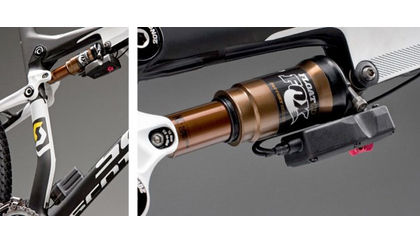
RELATED ARTICLE:
Guide to mountain bike suspension: An explanation of terms
Understanding some key concepts relating to mountain bike suspension is a crucial step to getting more from your ride... READ MORE
